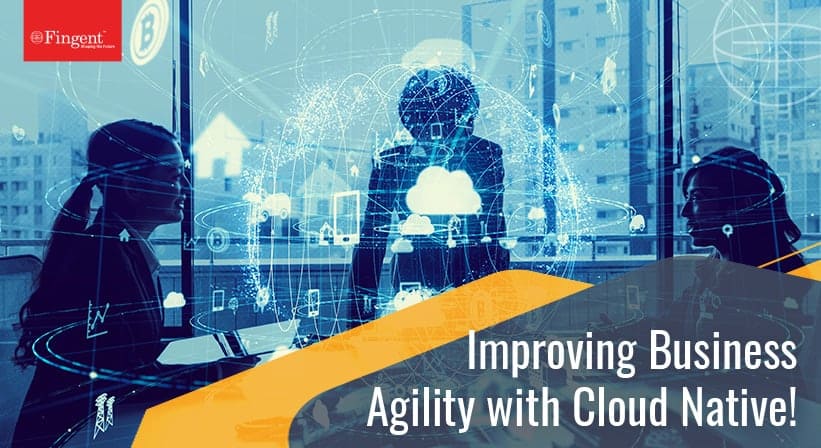Why prefer AWS over On-Premise Hosting
To cloud or not to cloud? That is the question. The need of the hour is to not just go beyond the hype thrown about by cloud providers to understand cloud services are indeed a better deal compared to on-premises hosting, but also distinguish between the various cloud options. Among the various cloud hosting options, Amazon Web Services (AWS), with its global presence offers the best all-around compute, database, storage, analytics and deployment services, ranks among the best options.
In 2017, AWS was ranked among the four largest public cloud providers in the world, along with Google Cloud, Microsoft Azure, and IBM Softlayer. AWS is also ranked as one of the leading information technology (IT) companies in the world, by revenue. Specifically, in the infrastructure as a service market, AWS has been noted to have a majority of the market worldwide. Amazon’s share of the IaaS segment was estimated at 44.2 percent. For Amazon, AWS’s IaaS revenue raked in 9.7 billion U.S. dollars in 2016.
Costs
Many business owners consider only the raw face value costs and remain oblivious to the total cost of ownership. For on-premise, the basic cost is the cost of the hardware and software required to put a solution in place. For the cloud, the basic cost is the recurring monthly service cost. However, there are other costs to consider for both models.
On-premises solutions are electricity hogs. Running the servers on a 24×7 basis, complete with cooling, consume much more energy than what normal PCs consume. An average in-house server consumes about $731.94 per year worth of electricity in the USA, including both direct IT power and cooling.
The savings on electricity alone would most likely compensate for the bandwidth costs cloud services attract. Amazon’s EC2 offers about 1GB of free outbound bandwidth per month anyway, allowing small users to get their bandwidth requirements for cloud storage gratis.
Another cost to consider is the replacement cost. Organizations replace on-premise systems every five years, on average. Stretching a server lifespan beyond this point carries the risk of unexpected failure and costly migration fees as the legacy software delves much further obsolescence than it would have after five years. Even where cloud services have higher recurring costs, the replacement cost makes it very cost effective in the long run. The economies of scale of the cloud service providers offset what it would otherwise cost them the same five-year replacement costs
AWS saves customers a sizable amount. Since AWS already has a staggering infrastructure in place, unmatched by just about anyone on the planet, the cost to provision for a new account is marginal. As such, AWS customers end up paying much less than what they would do for other solutions, both on-premises, and cloud. The cost savings extend to applications as well. The AWS Marketplace offers several highly intuitive products priced on an hourly basis, with no upfront cost.
Learn more about how to optimize cost with AWS.
Bandwidth
The cloud brings a lot of potential savings, both in direct cost and by eliminating indirect costs. The elephant in the room is bandwidth, though. Unless there is adequate bandwidth, performance issues will sap the vitality of the system.
However, it is a fallacy to assume on-premises solutions do not have any bandwidth issues. It still requires an efficient and well-designed network of switches and cabling to serve bandwidth-hungry applications inside office walls. Moreover, cloud services are getting smarter with how bandwidth is used, offering viable solutions even for those with a small pipeline to the internet. For instance, Office 365 handles massive searches across a 365 mailbox server-side, downloading in real time only pertinent emails that need to be opened. Outlook keeps a local cache of email mailbox.
It is also important to remember all cloud hosting providers are not equal. The safe bet is to opt for market leaders such as AWS who has the capability to throw in virtually infinite storage, bandwidth, and computational power when needed. Increasing bandwidth on surges in traffic is easy with a few mouse clicks or swipes, and scaling down is likewise, to avoid paying for unnecessary resources. The cloud eliminates the vexatious and unpredictable task of provisioning. With AWS, it gets even better. There is no uncertainty and IT departments can be assured of elasticity at any time of the day or night, without any hassles.
Reliability and Uptime
The cloud offers much better reliability and uptime than on-premises servers. AWS offers 99.95% guaranteed uptime, and also robust backup protocols which ensure nothing uploaded to their servers will ever be lost. At a macro level, on-premises servers face 14 days of downtime in a year, whereas the average rate of downtime for cloud servers is just 30 hours a year. The total cost of downtime for businesses run into a whopping $26.5 Billion USD every year.
On-premise exchange servers are maintenance-heavy, requiring heavy infrastructure. Practical considerations mean the best practices are not always followed. In contrast, cloud giants such as AWS have dedicated teams and unlimited resources to throw into their core competencies, and they leverage the benefits of economies of scale, which they pass on to their customers. The vast technical backbones that power cloud data centers are technologies that are out of most individual users.
Robust Security
AWS makes affordable to small and medium enterprises many features, and the high quality of service, previously affordable only by big corporations. For instance, security has major implications, and often it is weak security that makes enterprises opt for on-premises solutions. AWS offers the same high-grade security features for a small proprietorship and a Fortune 500 firm since the security protocols in place for SAWS are for the system as a whole. And such security systems are far superior to anything on-premises systems can come up with.
The intuitive AWS Management console makes it easy to monitor and control the account, including add or decrease space, launch EC2 instances, add or remove a service, and more.
The success of moving to the cloud depending on getting the bandwidth and other configurations right, and also deploying cloud-optimized apps that allow employees to access their required functionality through the cloud.
Related Reading: Choose the right Cloud service model for your Business
Fingent top custom software development company custom software development company is your perfect partner for delivering cutting edge applications hosted on AWS. With our wealth of experience cutting across industries, we are best poised to deliver the most optimal solutions, fully customized to our requirements, in the most cost-efficient manner.
Stay up to date on what's new

Recommended Posts

30 May 2023 B2B
Cloud Application Development: Empowering Your Business In The Digital Era!
“Cloud computing is really a no-brainer for any start-up because it allows you to test your business plan very quickly for little money. Every start-up, or even a division within……

01 Apr 2022 B2B
Can Moving to Cloud Native Improve Business Agility?
Reinventing. Transforming. Scaling – that is what Cloud Native can mean for businesses today! Cloud-Native can help businesses achieve phenomenal success and improve their ability to deliver more features faster……

11 Feb 2022 B2B
Cloud-Native Application Development: How It’s Powering App Delivery!
Applications are at the front and center of business strategy today. Software-driven business transformation requires new apps that can be developed and delivered faster. Organizations need a new platform to……

02 Nov 2021 B2B
Thinking Beyond Cloud Migration: Unlocking Opportunities with Cloud Continuum!
The “cloud” is a part of an evolution in IT services. IT services took the mainframe and turned it into the cloud. In the beginning, the on-premise IT department was……
Featured Blogs
Stay up to date on
what's new






















































